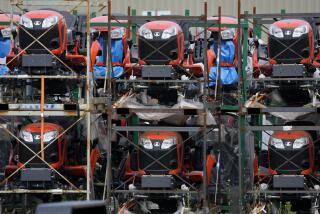Productivity Said Key to Rebound
JACKSON HOLE, Wyo. — The information technology boom of the 1990s stoked a “new economy” characterized by surging output per worker but with hard-to-measure and possibly vulnerable underpinnings, participants at a blue-ribbon crowd of policymakers, economists and academics heard over the weekend.
Most felt a slowdown in the U.S. economy, which has developed over the last year, will ease later this year or in 2002. However, its timing and vigor depend on a pickup in productivity, or output per worker, being sustained even in the face of a rapid falloff in business capital spending on computers and other goods.
The information economy was the theme of this year’s exclusive gathering, the 25th such symposium at a remote Rocky Mountain resort. Organized by the Kansas City Federal Reserve Bank, it brought Fed Chairman Alan Greenspan and about 100 people together to mull the issue in the meetings and to swap observations on the state of the economy in the corridors.
All agreed that a remarkable speedup in productivity from about the mid-1990s until 2000--when the pace of U.S. economic growth began to slow--was a key not only to past but future performance. In the process, it changed the way in which Americans work and spend and add to their incomes.
“The high-pressure economy, tight labor market and gratifyingly low unemployment rate of the last half-decade is hard to envision without the productivity speedup, which is largely driven by the technological revolutions in data processing and data communications,” said Lawrence Summers, president of Harvard University and former Treasury secretary.
Greenspan did not directly address the symposium’s theme, instead telling the group the U.S. central bank was working on ways of better measuring economic activity to take account of capital gains from sales of homes and from equities--some of those generated by a run-up in stock prices for high-tech firms that has deflated over the last year and a half.
The Fed has sought to buoy the economy through its current slowdown by cutting interest rates seven times this year, for a total 3 percentage-point reduction. Greenspan gave no hints about future policy moves but some economists said outside the formal meeting that the rate-easing cycle might not be as near an end as some think.
“A lot of people have called this an exceptionally aggressive easing cycle by the Fed, but I think they have confused the speed of the moves with how far they have actually gone,” said John Lipsky, chief economist for J.P. Morgan Chase. “Our guess is that there is more to come.”
A strong flavor of uncertainty hung over the proceedings, with several participants noting the U.S. economy can successfully skirt recession if productivity holds up, but it could quickly be in trouble if output per worker falls to lower rates found in the 1970s and 1980s.
“If the productivity trend collapses, the favorable performance of the ‘90s could unravel, with higher inflation, higher unemployment, slower growth, stock market weakness and a dollar that could drop sharply,” cautioned Martin Baily, a senior fellow at the Institute for International Economics and a former chairman of the White House Council of Economic Advisers in the Clinton administration.
With the U.S. economy by far the largest in the world, Europe growing slowly and Japan in a funk, the prospect that a U.S. bounceback is so dependent upon productivity clearly made some participants nervous.
Michael Mussa, former chief economist and now special advisor to the International Monetary Fund, said he worried about “unreasonably optimistic” hopes for productivity gains, especially at a time when the U.S. economy already is burdened by a huge trade imbalance and when the U.S. dollar is at strong levels relative to other currencies.
“If expectations disappoint, a lot of those imbalances could come back to haunt the United States and the global economy going forward,” Mussa warned.
More to Read
Inside the business of entertainment
The Wide Shot brings you news, analysis and insights on everything from streaming wars to production — and what it all means for the future.
You may occasionally receive promotional content from the Los Angeles Times.










